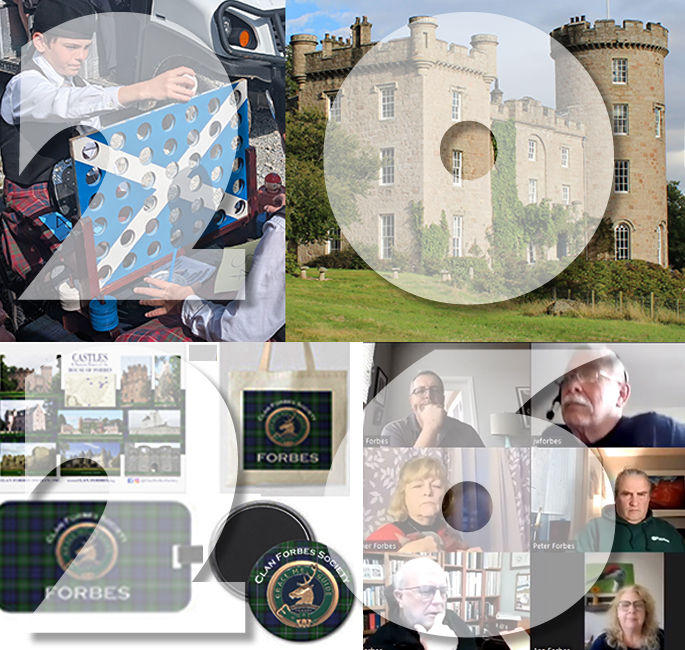William Forbes of Helsingør: A Scottish Merchant in Denmark’s Golden Age
- MissPalin

- Jun 2, 2025
- 3 min read
Updated: Jul 1, 2025
In the bustling port city of Helsingør during the height of the Sundtoldstiden (Sound Toll Era), one of the earliest documented Scots to settle in Denmark was William Forbes, also known as Willum Forbus.

Forbes was born sometime before 1474 in Aberdeenshire, Scotland. His grandfather was likely Duncan Forbes, a “natural” (illegitimate) son of Sir William Forbes, 1st laird of Pitsligo. In about 1500, Forbes established himself as a merchant in Ålborg. He later became a Councilman in Helsingør (known in English as Elsinore), where many Scots worshipped at St. Olaf’s Church. In 1501 William Forbes’ occupation was listed as merchant in the Vor Frue Kloster (Abbey of Our Lady) in the city of Aalbor a shipping port on the Nibe Bredning (Nibe Broadening.)
William Forbes married Johanne Thomasdotter (“Thomas’s daughter”) and they had at least two children, including a daughter Karine Forbes born between 1517 and 1522. They had another daughter Margrethe Villumsdatter (“William’s daughter”) who died about 1590.

Karine Forbes married nobleman Henrik Mogensen Rosenvinge, who was the mayor of Elsinore and the Bailiff of Bergenhus Rosenvinge. He was the son of Mogens Jensen who was the secretary for Prince Christian (1481-1559.) Prince Christian reigned as Christian II, King of Denmark and Norway, from 1513 until 1523. He was also briefly King of Sweden from 1520 until 1521.
Christian II raised the Sund fees which affected trade between Sweden and the Hanseatic League, which was a commercial network of guilds and market towns in Central and Northern Europe. As a consequence, Lübeck and Danzig joined the newly independent Sweden in war against Denmark. However, Christian II defeated Sweden in 1520 with mercenaries from France, Germany, and Scotland.
In 1529, Christian II’s successor, Frederick I (who reigned from 1523 to 1533) granted William Forbes land in Falsterbro in Scania (Skåne). After his wife’s death in 1549, he moved across the Sund to Elsinore. In 1560, he was listed as a resident of Helsingborg, Skåne. Willum Forbes died in 1561 in Elsinore.
On June 3, 1561, Willum Forbes’s son-in-law, Henrik Mogensen corresponded with Duncan Forbes, 1st laird of Monymusk, who confirmed that “Blessed Willum Forbes in Helsingborg” was descended from the Forbes of Pitsligo. Therefore, Sir Robert Forman of Luthrie, Lord Lyon King of Arms in Scotland, allowed the use of symbols on the Pitsligo coat of arms, specifically the three muzzled bear heads and the “fraise” or stylized flower of the strawberry plant. The coat of arms issued in Denmark is described as a blue shield, red rose, three bear heads, on helmet the crest a demi savage, crossed arms with club in hand and the shield was: "Azure, a fraise between three bears' heads argent muzzled sable."
As thus it is established that this William Forbes settled in Denmark and his descendants formed one of the first Forbeses blood lines in Denmark.

Timeline:
before 1470/1475 William Forbes born in Scotland; Pitsligo was a coastal parish in the historic county of Aberdeenshire
1501 registered in Ålborg as a merchant (Denmark)
latest 1517/1522 daughter Karine Forbes born
1529 William Forbes received Danish Crown’s land Falsterbro, Skåne (Denmark, now Sweden)
latest 1540 daughter Karine Forbes married nobleman Henrik Mogensen Rosenvinge
1549 wife Helene Thomasdotter died in Helsingborg, Skåne (Denmark, now Sweden)
1560 William Forbes listed as resident of Helsingborg, Skåne (Denmark, now Sweden)
1561 Willum Forbes died in Elsinore (Denmark)
1561 armorial bearing, Pitsligo, matriculated for William Forbes
by MissPalin
(Sources: Helsingør in Sundtoldtiden 1426-1857)
Read about more Forbeses abroad here https://www.clan-forbes.org/beyond-scotland




Comments